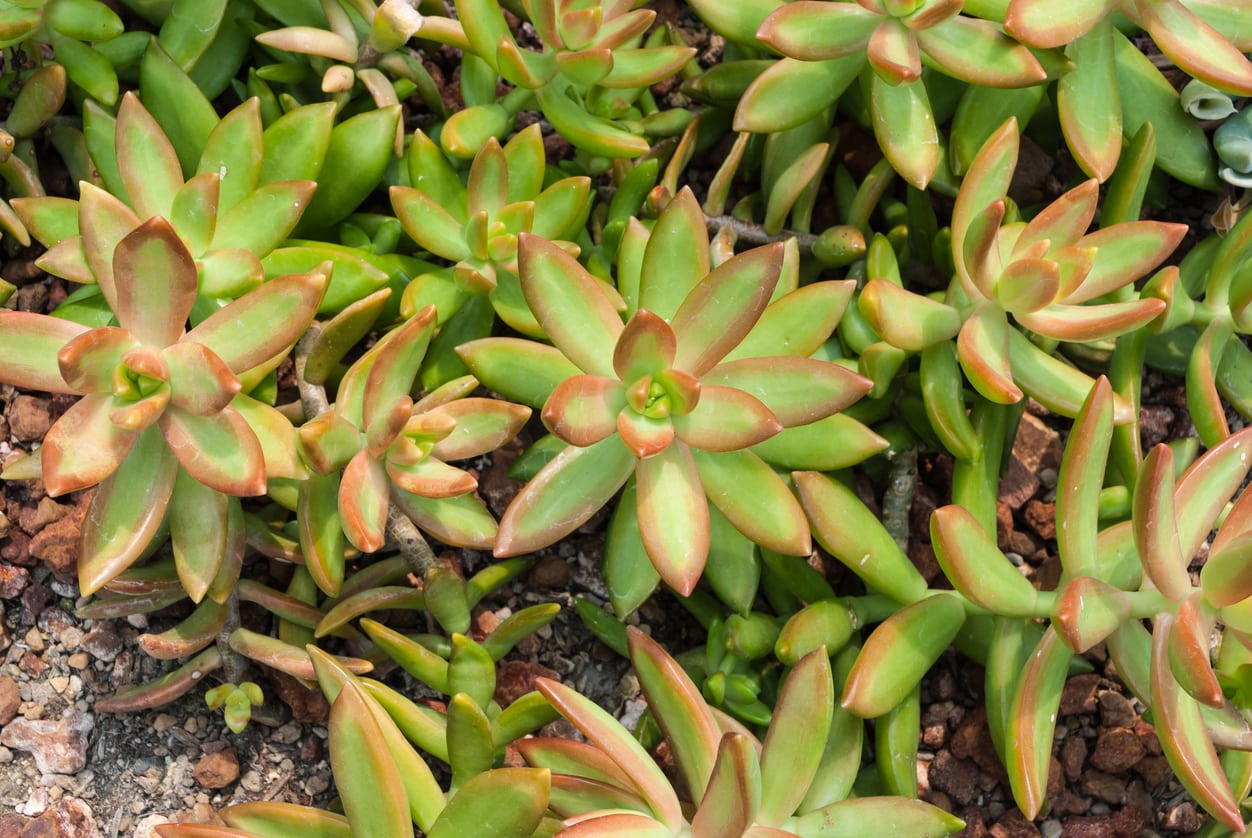Coppertone Stonecrop Info: Caring For A Coppertone Succulent Plant


The genus Sedum is a widely varied group of succulent plants. Coppertone sedum plants have outstanding color and form, plus amazingly forgiving cultivation requirements. USDA zones 10 and 11 are suitable for growing Coppertone succulents, but they make excellent houseplants for the northern gardener. Read on for more Coppertone stonecrop info, including planting and care.
Coppertone Stonecrop Info
Stonecrop plants come in sizes that are knee high to just a couple of inches (5 cm.) from the ground. Coppertone sedum plants grow 8 inches (20 cm.) tall with short stems that support large rosettes of nearly 2 inches across (5 cm.). These rosettes are the source of the name, as they can be yellowish green, but in full sun turn an orange rust or copper-like tone. The unique hue provides a startling contrast to common green succulents, like jade plants, or as a complement to the alien looking euphorbia. Sedum nussbaumerianum is native to Mexico and is perfect for dish gardens, desert landscapes, and even Mediterranean themes. It was first discovered in 1907 but was not named until 1923 as a tribute to Ernst Nussbaumer, head gardener at Bremen Botanic Garden. The stems of the rosettes are rusty brown and wiry and those rosettes multiply every year until a mature plant has many pups clustered around her. In time, the plant becomes a low growing shrub 2 to 3 foot (61-91 cm.) wide. Starry, slightly scented, flowers with pink-blushed anthers appear in spring.
Growing Coppertone Succulents
This versatile plant requires full sun to bring out the orange tones but has a bright yellow green in partial shade. In warmer regions, the plant will cascade down a rockery or tumble out of a vertical wall. Sedums are even used in roof gardens, where the heat generated from roofing material would punish most other plants. Outdoor plants look charming dotted around paving stones or tumbling along the edges of paths. Place them at the fronts of beds with larger sun-loving plants at the rear. Indoor plants can hold their own in a container or be part of a dish garden with several other types of desert denizens nestled together.
Caring for a Coppertone Succulent
Like most succulents, Coppertone is a very tolerant plant with few needs. The main requirement is well-draining soil. Containers should have prominent drainage holes and the growing medium must be partially gritty to allow excess water to easily percolate through it. Choose a container that is unglazed in order to encourage evaporation of excess moisture. Water infrequently but deeply. These plants need half the water in winter when they are dormant. If you wish to start more of these cute plants, separate a rosette from the parent and simply lay it on gritty growing medium. In time, it will send out roots and establish itself.
Gardening tips, videos, info and more delivered right to your inbox!
Sign up for the Gardening Know How newsletter today and receive a free copy of our e-book "How to Grow Delicious Tomatoes".

Bonnie Grant is a professional landscaper with a Certification in Urban Gardening. She has been gardening and writing for 15 years. A former professional chef, she has a passion for edible landscaping.
-
 Looking For Plants To Give You The Soft And Fuzzies? Try These 5 Fuzzy Leaf Plant Options
Looking For Plants To Give You The Soft And Fuzzies? Try These 5 Fuzzy Leaf Plant OptionsLovers of texture, drama, silver foliage and tactile plants will adore these special sensory garden additions. These fuzzy leaf plant options will leave you all aglow
By Susan Albert
-
 Get Ready For A Summer Of Hummers! Grow These Full Sun Hummingbird Plants and Flowers
Get Ready For A Summer Of Hummers! Grow These Full Sun Hummingbird Plants and FlowersIf you’re lucky enough to enjoy a sunny backyard, make sure you are maxing out on your pollinator opportunities and grow these full sun hummingbird plants and flowers
By Tonya Barnett